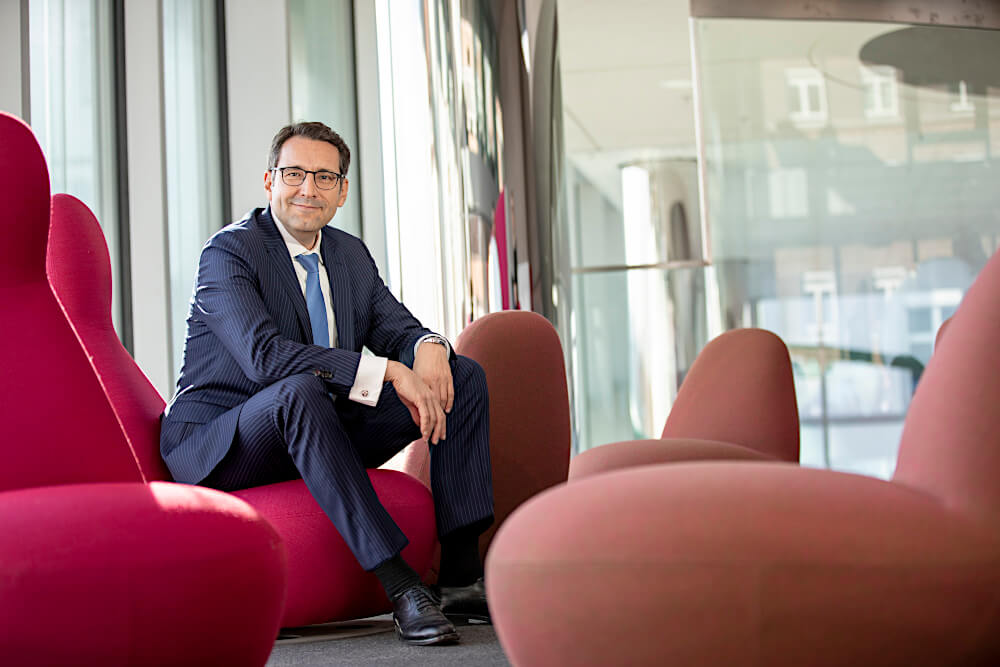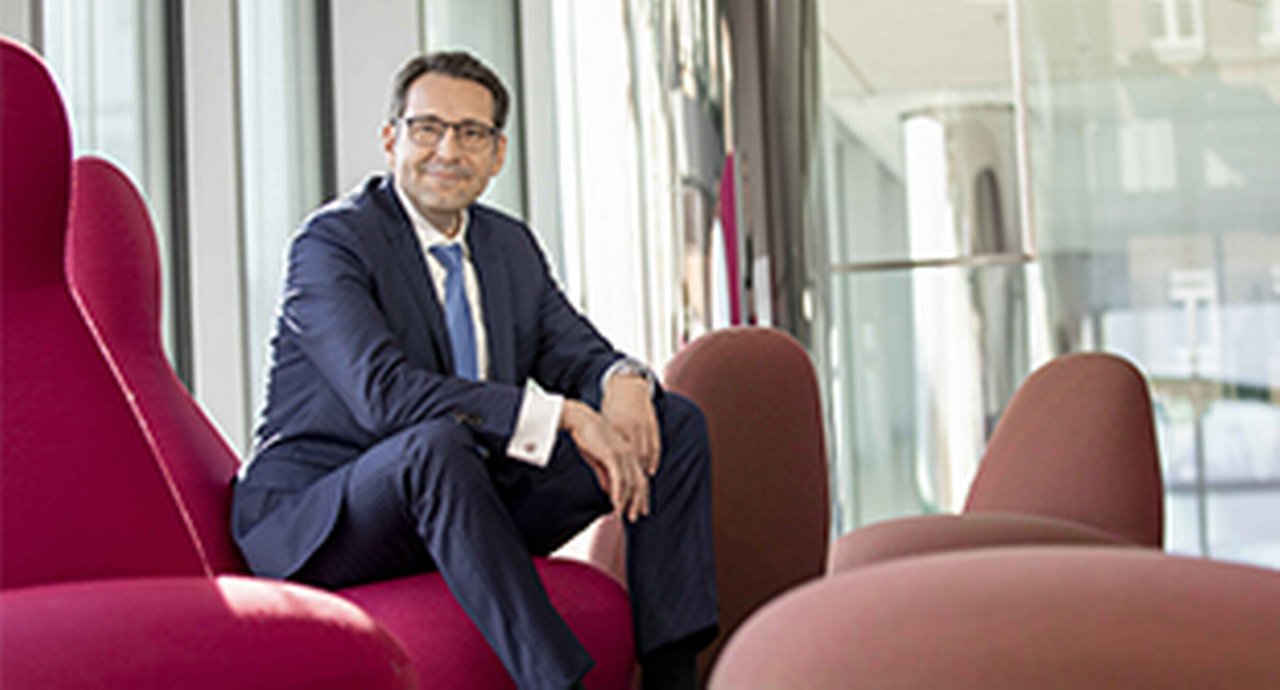11 November 2021
German vibrant science and technology company Merck has turned its treasury business in India inside out. Jörg Bermüller tells flow’s Desirée Buchholz how his team reduced FX risks, optimised liquidity and streamlined processes in an award-winning project with Deutsche Bank
MINUTES min read
Founded in 1668, Merck is the world’s oldest operating chemical and pharmaceutical company, as well as one of the largest. The range of products the German company offers is wide; Merck KGaA – or Merck EMD as it is known in North America – develops new cancer treatments, sells pigments for the automotive industry, and produces OLEDs which enable a new generation of lighting to name just a few of its business activities. The company is headquartered in Darmstadt.
Despite its long history, some of the most radical changes have taken place only recently. In 2015, Merck bought the American biotechnology company Sigma Aldrich for €13.1bn – extending not only the company’s life science business but also increasing its presence in North America as well as in several fast-growing Asian markets.
Four years later, the pharma company landed another major deal, acquiring Versum Materials, a US semiconductor solutions specialist, for €5.8bn. Merck, headquartered in Darmstadt, now has 58,000 employees globally and a presence in 70 countries across Europe, Africa, Asia and the Americas. Over the last 10 years, the company has almost doubled its revenue – from €9.3bn in 2010 to €17.5bn in 2020.
From central to regional
This tremendous growth has persuaded Merck’s treasury to rethink its global set-up. “We used to have a very centralised approach,” recalls Jörg Bermüller, Head of Cash and Risk Management in Group Treasury, Merck. “But with Asian countries like South Korea or Taiwan reaching a significant size of turnover, we decided that setting up regional treasury centres would allow for a more efficient management of treasury activities going forward.”
Since 2018, the company has operated treasury centres in Montevideo (Uruguay) and Manila (Philippines), as flow reported in the June 2020 article ‘A healthy approach’. At the same time, Bermüller and his team have begun to reshape the set-up in each country to streamline processes, increase transparency and reduce operational costs.
Every project takes from 15 to 24 months, Bermüller explains, with the treasurer and his team acting as consultants for the local entities. “We are starting with Adam and Eve and question every single process of the local treasury operations,” he says. Last year, the team turned to India, where the company operates four business entities in Mumbai and Bangalore.
Following a thorough internal analysis and a beauty contest among nine banks, Merck decided to team up with Deutsche Bank to reduce FX risk, leverage new technologies like Robotic Process Automation (RPA) and roll out its global payment factory in India. For this achievement the company won the “Best in Class Treasury Solution in India” category in the Adam Smith Awards.

Merck’s production side in India
Source: © Merck KGaA, Darmstadt Germany
Turning treasury inside out
But let’s start the story from the beginning: In a market like India, there are various challenges for an optimisation programme of the scale that Merck was planning. The country’s restrictive monetary policies and highly regulated financial market affected day-to-day operations, and the company was facing large FX impacts with limited ability for local hedging.
Additionally, manual local processes and a fragmented banking landscape across the four legal entities created multiple inefficiencies. “We wanted to become faster, more transparent and reduce frictions,” says Bermüller. Drawing a comparison with European football, he adds: “We were playing in the Bundesliga, but our goal was to have a treasury set up in India that could win the Champions League.”
Consequently, the whole treasury business in India was turned inside out: cash management, foreign exchange risk management, liquidity management and working capital as well as treasury reporting was put on the table. “This holistic approach was what made it special and challenging at the same time. Every gear had to mesh together.”
“We were playing in the Bundesliga, but our goal was to have a treasury set up in India that could win the Champions League”
Among the most important gears was choosing the right bank. “In general, we are only working with one bank per country and currency to achieve best process efficiencies,” Bermüller explains. In June 2020, Merck launched a request for proposal in India. It was a very tight race, he recalls, with Deutsche Bank winning the full banking mandate for two reasons. “First, Deutsche Bank’s strong cash management capabilities enabled Merck to utilise our payment factory for more than 25 payment types paperless via SWIFT. Second, Deutsche Bank understood Merck’s needs best and empowered us to fully automate all processes connected to banking like reconciliation and global hedge adjustments.”
Rule-based FX hedging
The innovative hedging process is one of the key features of the new treasury set up in India. To understand why, one needs to know that the bulk of Merck’s inbound and outbound cross-border flow in India are inter-company payments. In the past, these flows were invoiced in euro or US-dollar, but Merck wanted to switch into Indian Rupee, thereby moving the FX exposure to its headquarters. At the same time, to keep hedging costs low, Merck strove for a frequent automated payment process including headquarter hedge adjustments.
This move was accomplished by creating a rule-based, automated workflow, based on Robotic Process Automation (RPA) and designed to work with minimal human involvement. This is achieved via a target balancing solution in combination with immediate payment due dates. In addition to reducing FX risk, the new approach also allows Merck to further optimise liquidity.
Under the new process, Deutsche Bank starts to collect all data available from customs and provides electronic information to Merck including a proposal of all payments, which can be executed with the cash balances available. Merck releases those in a customised web page, which is integrated into an automated reconciliation process. As Deutsche Bank actively collects all data, Merck is no longer obliged to support the payments with hundreds of paper documents.

“Many companies manage their intercompany flows in India on a monthly basis with FX hedges being scheduled to that specific date,” says Harald Abel, expert for electronic FX management at Deutsche Bank. While this means the company only needs to execute 12 hedging transactions a year, it also requires cash to be managed in India, thus creating administrative work. Another disadvantage is the lack of flexibility. “If a large payment needs to be executed, the hedge has to be adjusted,” Abel explains. At Merck this has now changed.
Reducing costs through standardisation
After almost 24 months of planning, implementation and testing, the new structure was put in place in summer 2021. “Everything is running smoothly, and we are happy with what we have achieved,” Bermüller reports. He adds that the project has led to savings in the single-digit million range – thanks to the standardisation and automation of processes. “This enabled us to shift activities that have so far been done manually to our shared service centre in Manila with a much smaller task force,” he explains.
“Everything is running smoothly, and we are happy with what we have achieved”
In retrospect, the biggest challenge for the treasurer and his team was adapting to the fact that they could not travel to India due to the Covid-19 pandemic. “Usually, we would sit next to our local colleagues and watch how for example an FX rate is captured in our system,” says Bermüller. With the treasury optimisation project in India, however, Merck’s treasury team needed to analyse the status quo of treasury processes in Mumbai from the Darmstadt office. “This required much more communication and time invest from my team.” And there is no time to rest on their laurels, as more countries are waiting for an overhaul of treasury processes at Merck.
Cash management solutions Explore more
Find out more about our Cash management solutions
Stay up-to-date with
Sign-up flow newsbites
Choose your preferred banking topics and we will send you updated emails based on your selection
Sign-up Sign-upSubscribe Subscribe to our magazine
flow magazine is published annually and can be read online and delivered to your door in print
You might be interested in
CASH MANAGEMENT {icon-book}
A healthy approach A healthy approach
German science and technology giant Merck has been developing healthcare solutions for 350 years, and remains at the leading edge of biotechnology. Graham Buck finds out how the spirit of innovation underpins its corporate treasury team
Cash Management, flow case studies
Connecting cash Connecting cash
Wieland is a fast-growing German copper and copper alloy specialist. After a series of M&A acquisitions in the US, the treasury team found the successive legacy cash management systems were impeding efficiency. flow’s Desirée Buchholz reports on the turnaround
Cash management, flow case studies
Superior vision Superior vision
For Swiss multinational healthcare company F. Hoffman-La Roche AG – aka Roche – full visibility over available intraday bank transactions is essential for its treasury department in efficiently managing cash. flow reports on how working with Deutsche Bank enabled the team to develop an enhanced intra-day statement



